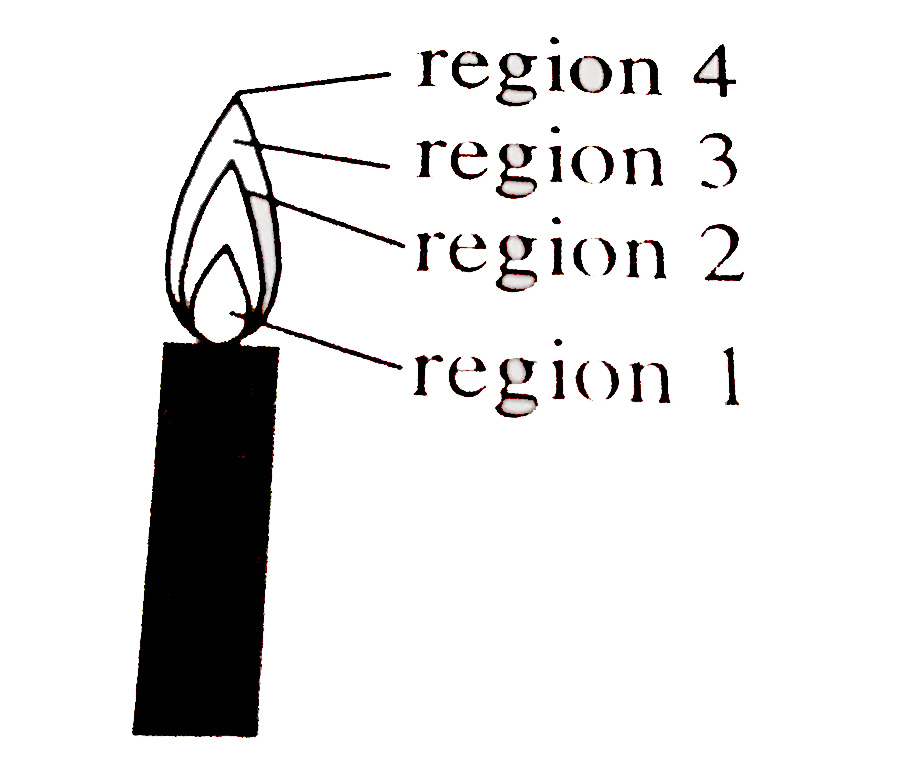The violet flame shown by potassium in bunsen flame is due to jumping of the electron from
1s to 4p
1s tto 5p
4p to 4s
5p to 4s
The correct Answer is:D
To solve the question regarding the violet flame shown by potassium in a Bunsen flame, we need to understand the electronic transitions that occur when potassium is heated. Here is a step-by-step solution:
Step 1: Understand the Electronic Configuration of Potassium
Potassium (K) has an atomic number of 19, which means it has 19 electrons. The electronic configuration of potassium is:
- 1s² 2s² 2p⁶ 3s² 3p⁶ 4s¹
Step 2: Identify the Excited State
When potassium is heated in a Bunsen flame, the energy from the flame excites the outermost electron (which is in the 4s orbital) to a higher energy level. The relevant higher energy levels for potassium include the 4p and 5p orbitals.
Step 3: Determine the Transition Responsible for the Violet Flame
The violet color in the flame is due to the transition of the excited electron from a higher energy level back to a lower energy level. In this case, the electron jumps from the 5p orbital back to the 4s orbital.
Step 4: Identify the Correct Option
Looking at the options provided:
- A: 1s to 4p
- B: 1s to 5p
- C: 4p to 4s
- D: 5p to 4s
The correct transition that produces the violet color is from the 5p to the 4s orbital. Therefore, the correct answer is option D.
Final Answer
The violet flame shown by potassium in a Bunsen flame is due to the jumping of the electron from the 5p to the 4s orbital.
---
Potassium (K) has an atomic number of 19, which means it has 19 electrons. The electronic configuration of potassium is:
- 1s² 2s² 2p⁶ 3s² 3p⁶ 4s¹
When potassium is heated in a Bunsen flame, the energy from the flame excites the outermost electron (which is in the 4s orbital) to a higher energy level. The relevant higher energy levels for potassium include the 4p and 5p orbitals.
The violet color in the flame is due to the transition of the excited electron from a higher energy level back to a lower energy level. In this case, the electron jumps from the 5p orbital back to the 4s orbital.
Looking at the options provided:
- A: 1s to 4p
- B: 1s to 5p
- C: 4p to 4s
- D: 5p to 4s
The violet flame shown by potassium in a Bunsen flame is due to the jumping of the electron from the 5p to the 4s orbital.
Topper's Solved these Questions
- THE S-BLOCK ELEMENTSBOOK - NCERT FINGERTPS ENGLISHCHAPTER - THE S-BLOCK ELEMENTSEXERCISE - Exemplar Problems
21 Videos
- THE S-BLOCK ELEMENTSBOOK - NCERT FINGERTPS ENGLISHCHAPTER - THE S-BLOCK ELEMENTSEXERCISE - Assertion & Reason
15 Videos
- THE S-BLOCK ELEMENTSBOOK - NCERT FINGERTPS ENGLISHCHAPTER - THE S-BLOCK ELEMENTSEXERCISE - Assertion And Reason
15 Videos
- THE P-BLOCK ELEMENTSBOOK - NCERT FINGERTPS ENGLISHCHAPTER - THE P-BLOCK ELEMENTSEXERCISE - Assertion And Reason
15 Videos
- THERMODYNAMICSBOOK - NCERT FINGERTPS ENGLISHCHAPTER - THERMODYNAMICSEXERCISE - Assertion And Reason
15 Videos
Similar Questions
Knowledge Check
Alkali metals give colour in Bunsen flame due to
Alow ionisation potentialBlow m.p.CsoftnessDone electron in the outermost orbit.
The hottest part of the flame of a Bunsen burner is the
View SolutionAssertion Green edge flame rest tells presence of borate ion.
Reason: Green colour of the flame is due to burining of tri ethyl borate.
View SolutionWhile testing borate, green edged flame is due so formation of (a) _____.
View SolutionThe hottest region of Bunsen flame shown in the figure below is :

View SolutionThe hottest region of Bunsen flame shown in the figure below is :

View SolutionThe image of a candle flame formed by a lens is obtained on a screen placed on the other side of the lens. If the image is three times the size of the flame and the distance between lens and image is 80cm, at what distance should the candle be placed from the lens ? What is the nature of the image at a distance of 80cm from the lens ?
View SolutionA chemistry student trying to detect the metallic ion in a salt, makes a paste on a clean platinum wire loop of the salt with concentrated HCl. When he takes a small amount of this paste and keeps it in a non-luminous Bunsen flame, the colour of the flame changes to grassy green.He should, therefore, conclude that the metal is
View Solution
